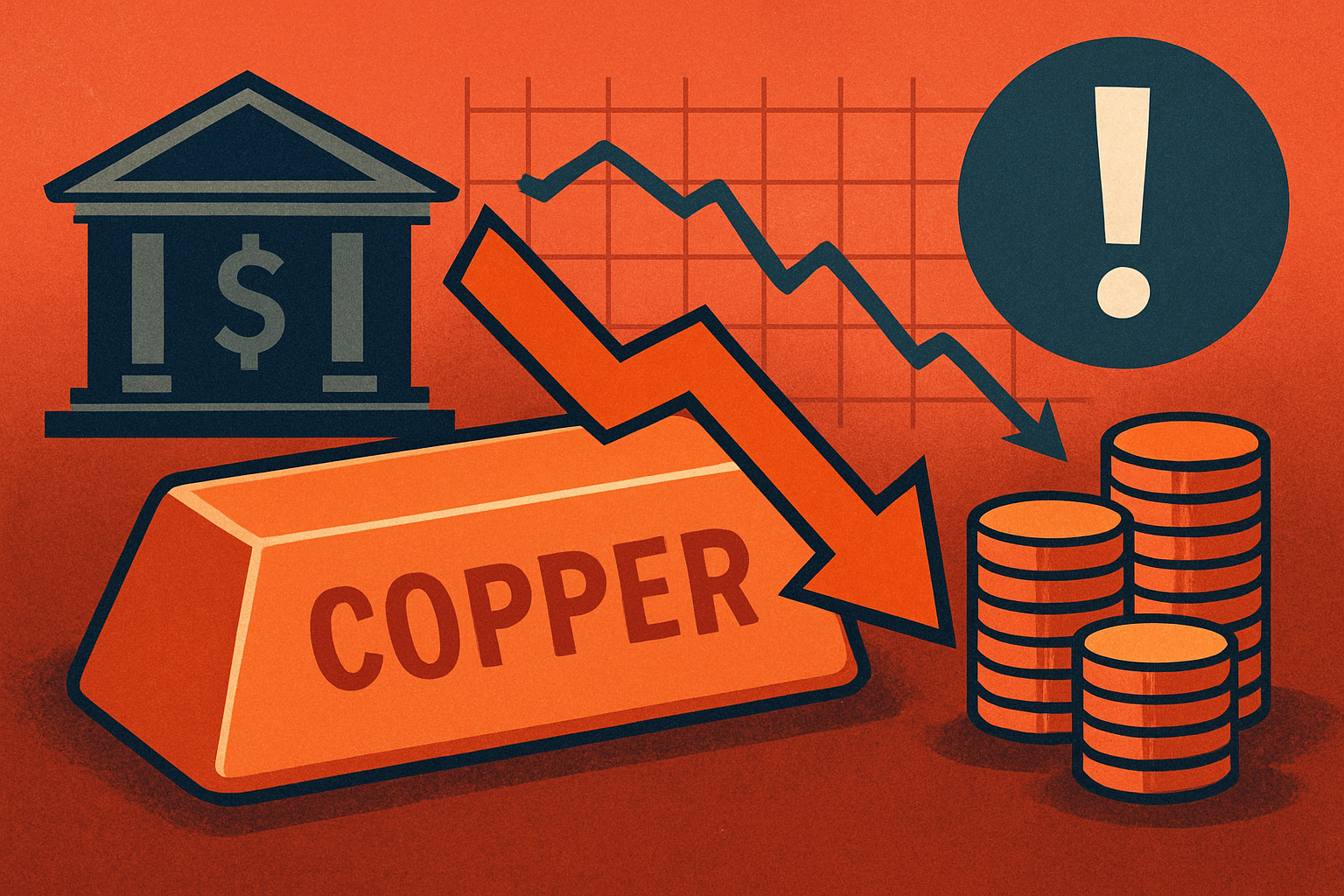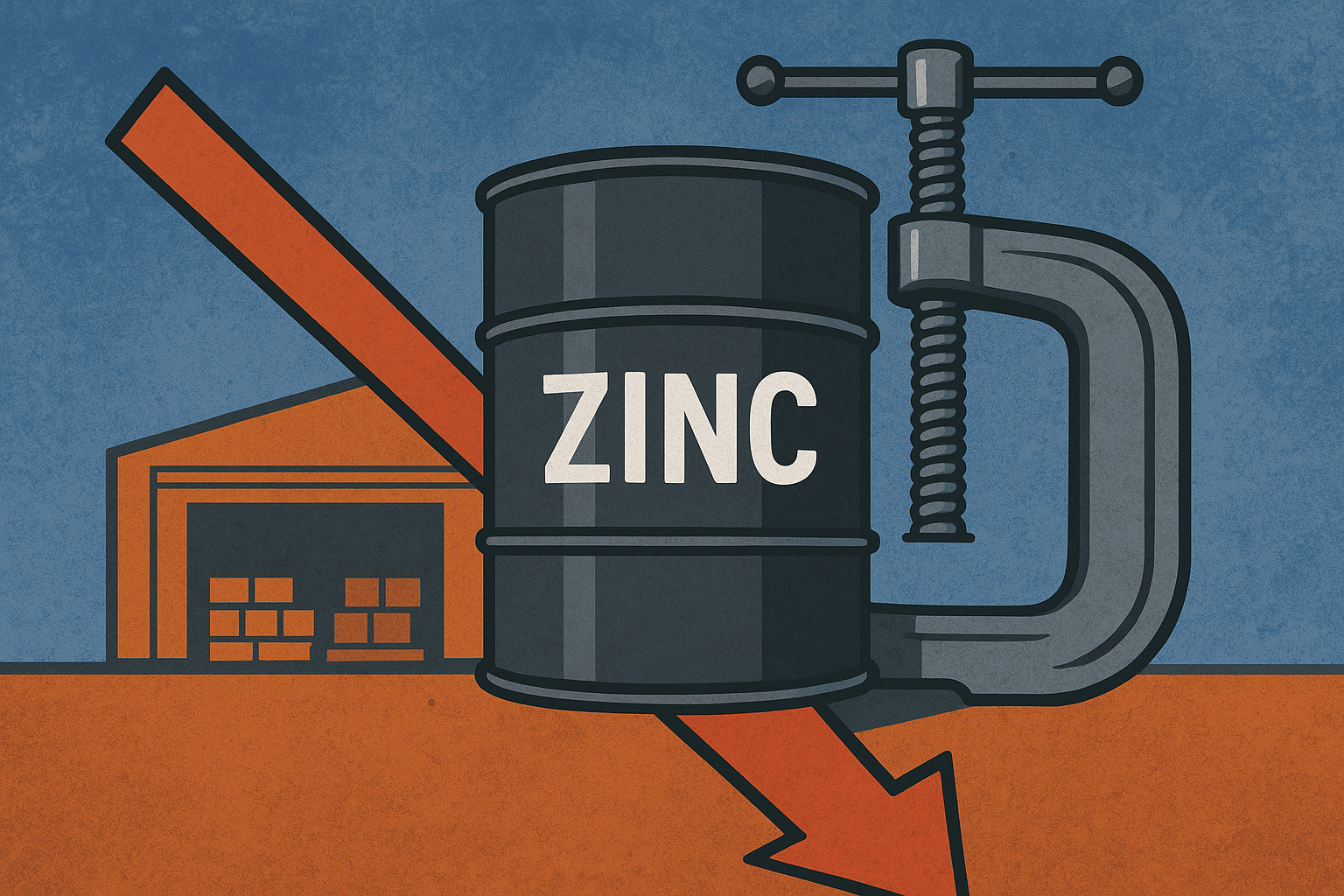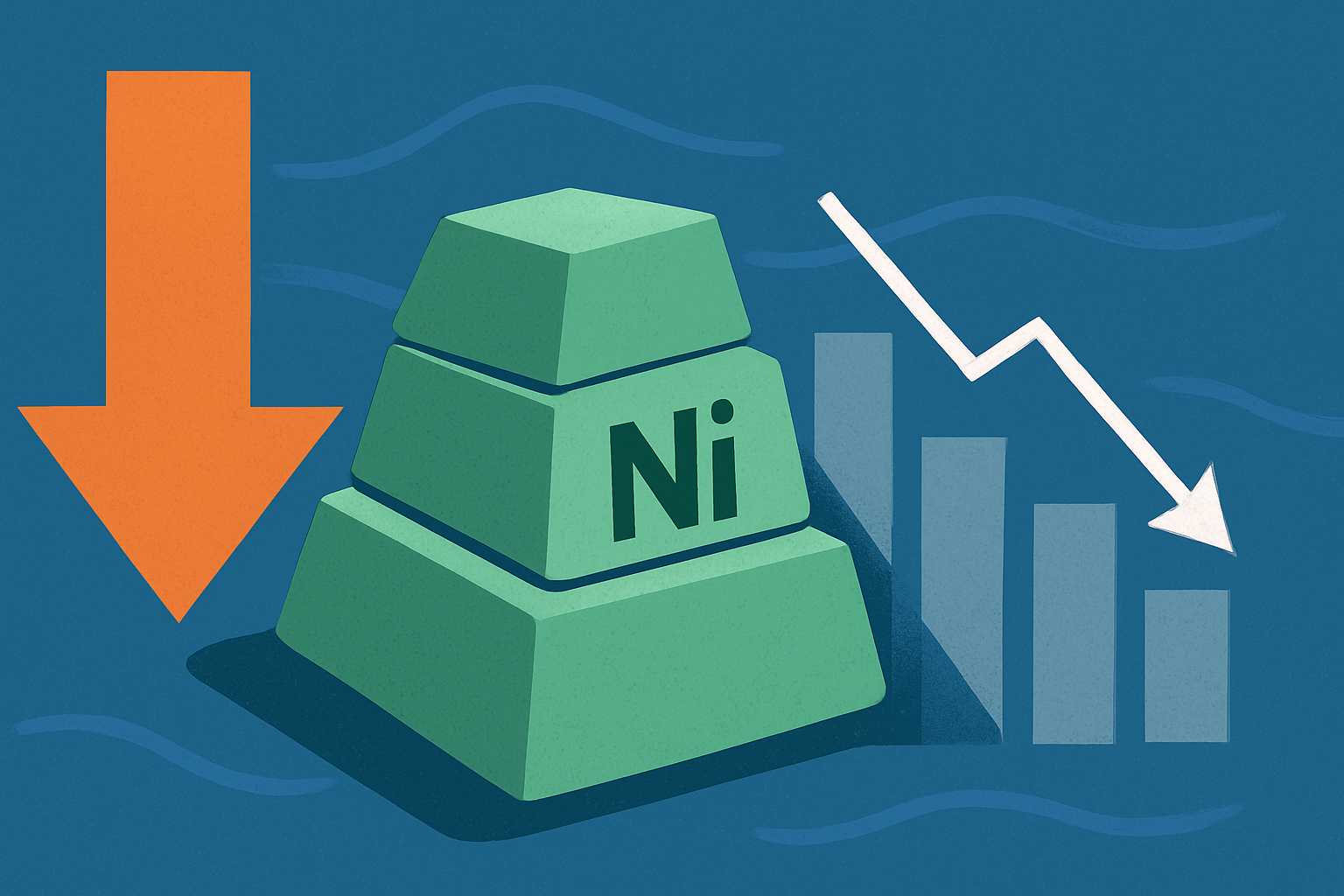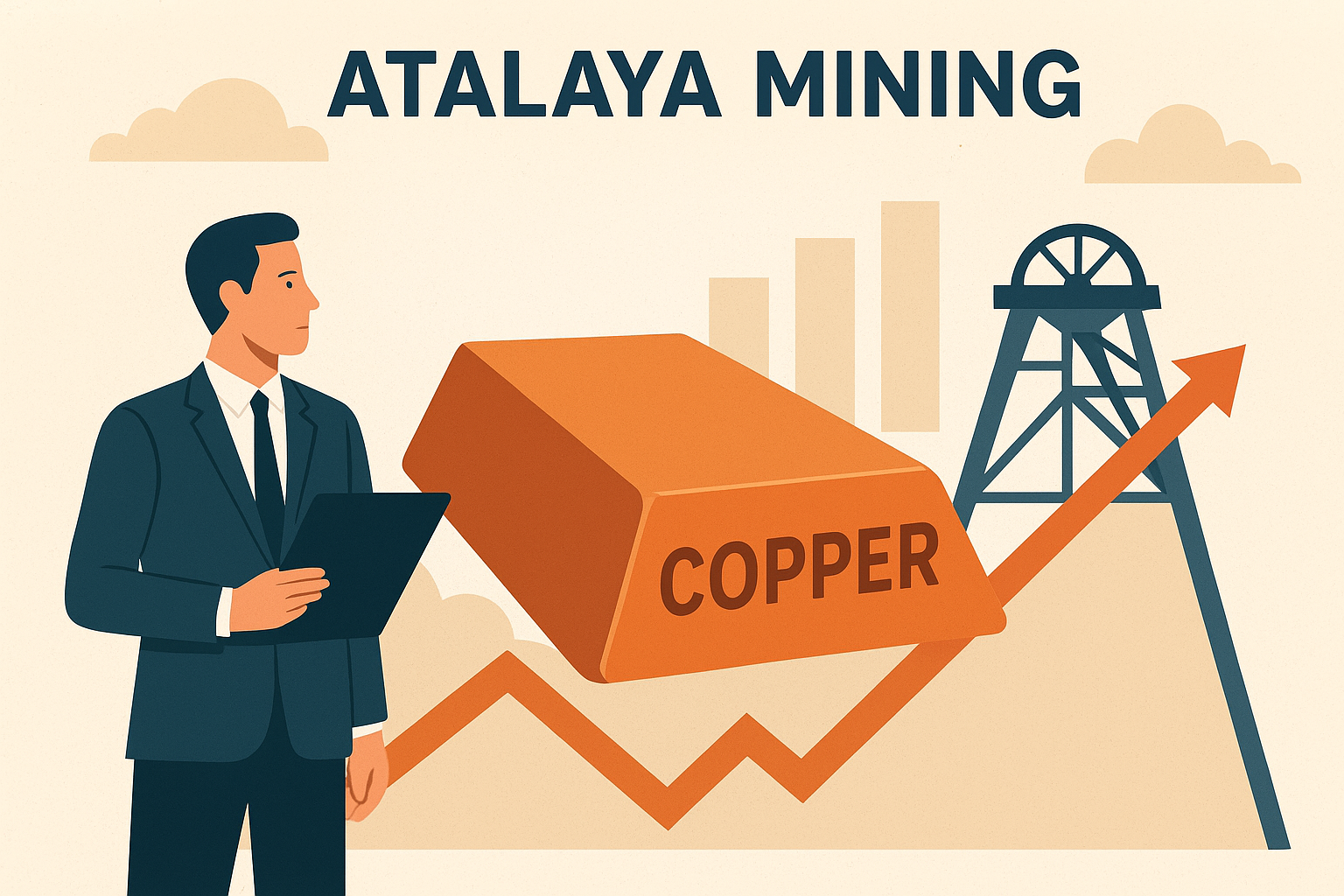Copper prices are facing renewed pressure this week, retreating sharply as investor sentiment sours amid growing concerns over the stability of U.S. regional banks and broader credit stress. The red metal—often viewed as a barometer for global economic health—fell about 1.7% to $10,466 per ton on the London Metal Exchange (LME), according to data from Zawya, marking its steepest weekly decline in over a month.
The pullback underscores how fragile confidence remains across commodity markets, where optimism around industrial recovery has collided with renewed fears of financial contagion and softening global demand.
A Sharp Shift in Sentiment
Copper’s decline comes on the heels of a volatile week for global markets. Banking-sector jitters resurfaced after reports indicated mounting loan losses among several mid-tier U.S. lenders, reviving memories of last year’s regional banking turmoil. Investors, already uneasy about slowing Chinese demand and a strong U.S. dollar, responded by cutting exposure to cyclical assets—including base metals.
“Markets are retreating into a risk-off mode,” said Philip Streible, Chief Market Strategist at Blue Line Futures, in an interview with Reuters. “Copper’s fundamentals remain relatively tight, but macro headwinds—particularly credit fears—are dominating near-term trading behavior.”
The Shanghai Futures Exchange also reported a modest increase in copper inventories, signaling softer downstream demand from China’s manufacturing sector, which had shown signs of a rebound earlier in the quarter. Rising inventories, coupled with weaker import data, suggest the world’s largest consumer of copper may be entering another phase of economic cooling.
Why This Matters for Investors
Copper’s movements extend far beyond the metal markets—it is a leading indicator for industrial growth, infrastructure investment, and green technology expansion. A sustained dip in copper prices could therefore reflect a broader slowdown in the global recovery.
For investors, the current downturn may have two implications:
- Short-term volatility risk: Credit stress in the U.S. financial system could further dampen risk appetite across commodity and equity markets. The correlation between copper prices and global stock indices remains historically high, meaning broader market weakness could deepen the decline.
- Medium-term accumulation opportunity: Analysts from Bloomberg Intelligence note that structural demand for copper remains intact, supported by long-term trends in electrification, electric vehicles, and renewable energy infrastructure. “Copper’s long-term fundamentals are bullish, but short-term liquidity squeezes can create tactical entry points for patient investors,” said the firm’s commodities research team in its latest outlook.
The Global Undercurrents
While macroeconomic risks dominate near-term sentiment, several supply-side factors are also influencing copper’s trajectory. Persistent disruptions in South American production—particularly in Chile and Peru—have constrained output growth, even as new projects face regulatory and environmental delays.
According to S&P Global Commodity Insights, global refined copper supply is expected to grow by only 1.2% in 2025, compared to a 3.5% expansion in demand. However, investors appear to be prioritizing liquidity concerns and financial risk over supply fundamentals, at least for now.
Meanwhile, China’s government is reportedly preparing additional fiscal stimulus measures to stabilize its property and manufacturing sectors. Should these policies materialize, they could help re-ignite copper demand heading into Q4 2025. But the market remains cautious: “Investors are waiting for real data, not promises,” said ANZ Research in a note this morning.
Future Trends to Watch
- U.S. Financial Stress Indicators: If regional banking pressure intensifies, liquidity-driven selling could spill further into commodity markets. Keep an eye on credit spreads and Federal Reserve commentary.
- Chinese Stimulus and Manufacturing Data: Any signs of demand recovery or stimulus-driven infrastructure spending could quickly reverse copper’s bearish tone.
- Green Energy Projects: Despite the short-term weakness, investment in grid expansion, EVs, and renewable energy remains a powerful long-term driver of copper consumption.
- Supply Chain Tightness: Delays or disruptions at major mines in Chile or the Democratic Republic of Congo could create a price rebound in the medium term.
Key Investment Insight
In this risk-off environment, the downside risk in copper remains elevated, but opportunities are emerging for investors who can tolerate short-term volatility. Accumulating gradually—or “layering in on dips”—may provide a strategic entry point ahead of potential policy support from China or easing credit stress in the U.S.
Investors should also consider diversifying exposure across integrated producers and copper-focused ETFs to capture upside potential without excessive single-asset risk. Monitoring sentiment indicators, such as the LME Commitments of Traders (COT) reports, can offer additional insight into when institutional capital begins to re-enter the market.
Stay Ahead of the Market
Copper’s recent slump serves as a reminder that even the most essential industrial metals are not immune to macro shocks. Yet, for long-term investors focused on the energy transition and industrial resilience, temporary corrections often pave the way for strategic accumulation.
Stay informed with ExplorationStocks.com—your daily source for credible, data-driven investor insights across commodities, critical minerals, and emerging market trends.






